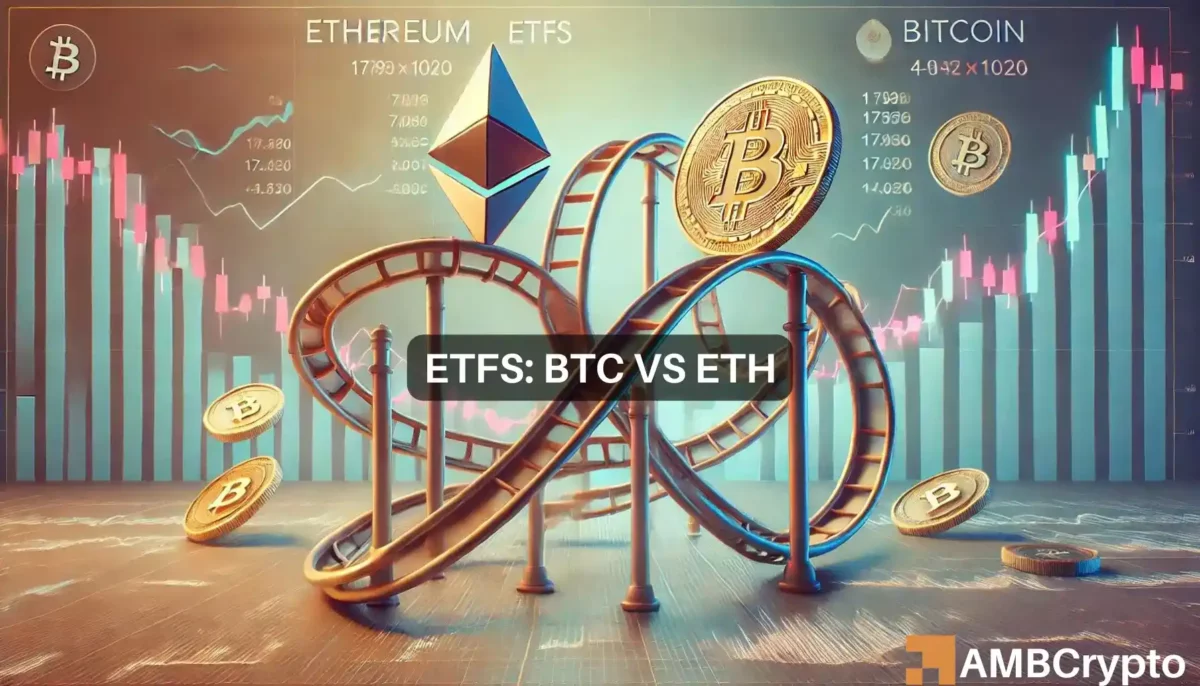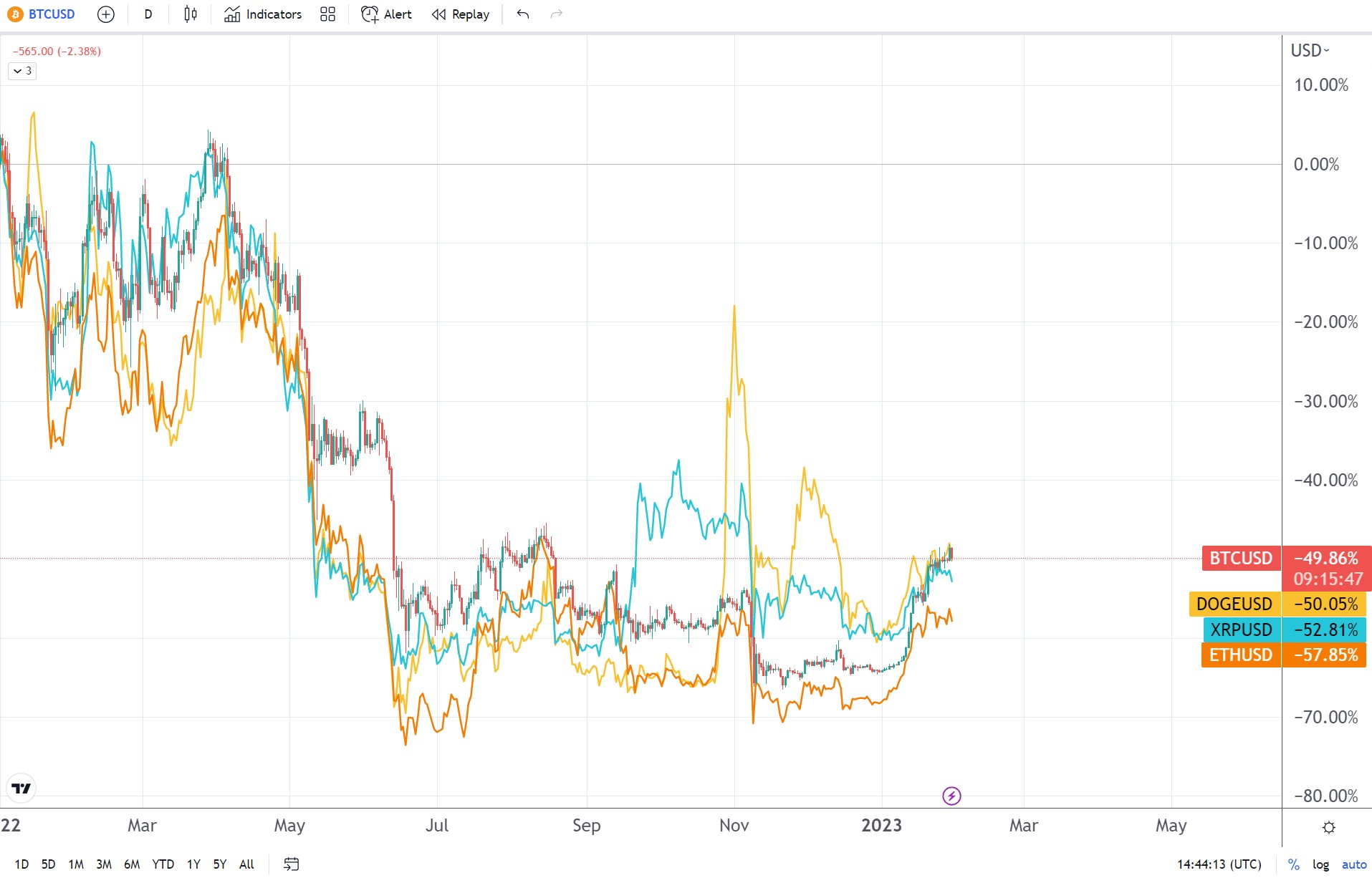Bitcoin Ether Etfs Inflows Funds Driving Market Dynamics
As bitcoin ether etfs inflows funds take center stage, this opening passage beckons readers into a world of financial innovation that is both engaging and enlightening. The growing interest in Bitcoin and Ether ETFs represents a significant evolution in the investment landscape, merging traditional finance with the burgeoning world of cryptocurrencies.
These ETFs offer investors a unique way to gain exposure to digital assets while navigating the complexities of the cryptocurrency market. With institutional players stepping in and regulatory frameworks evolving, understanding the inflows into these ETFs is crucial for grasping their impact on the financial ecosystem.
Overview of Bitcoin and Ether ETFs
Bitcoin and Ether represent two of the most prominent cryptocurrencies in the financial market today. Bitcoin, often touted as digital gold, serves as a store of value and a medium of exchange, while Ether, the native cryptocurrency of the Ethereum blockchain, powers decentralized applications through its smart contract functionality. Both have significantly influenced the market, contributing to the growing acceptance of cryptocurrencies in mainstream finance.Exchange-Traded Funds (ETFs) are investment funds that trade on stock exchanges, much like stocks.
They hold assets such as stocks, commodities, or cryptocurrencies, providing investors with an opportunity to gain exposure without owning the underlying assets directly. Bitcoin and Ether ETFs have emerged as innovative financial products, enabling institutional and retail investors to invest in these cryptocurrencies without the complexities of wallet management or direct purchases. The development of these ETFs has evolved over several years, reflecting the maturation of the cryptocurrency market and increasing regulatory clarity.
Understanding Inflows into Bitcoin and Ether ETFs
Inflows into Bitcoin and Ether ETFs have been influenced by several key factors. Firstly, growing institutional interest has played a pivotal role, as large entities seek exposure to cryptocurrencies to diversify their portfolios. The increasing acceptance of digital assets as legitimate investment vehicles has contributed significantly to inflows, as evidenced by the rise in assets under management (AUM) for these ETFs.Market trends, such as Bitcoin's periodic bull runs and Ether's expansion driven by decentralized finance (DeFi) projects, also strongly impact ETF inflows.
Many investors react to market sentiment, leading to spikes in inflows during bullish phases. Key players, including hedge funds, pension funds, and asset managers, are instrumental in driving these inflows by allocating capital to Bitcoin and Ether ETFs, seeking not only capital appreciation but also hedging against inflation concerns.
Comparison of Bitcoin and Ether ETF Performance

The performance of Bitcoin ETFs versus Ether ETFs showcases distinct growth trajectories. Bitcoin ETFs have historically attracted larger inflows, with many premier funds leading the pack. Conversely, Ether ETFs have been catching up, particularly as DeFi gains traction and the Ethereum network evolves.A comparison of growth rates illustrates this dynamic landscape:
| ETF Name | Type | Inflow Growth Rate (2022-2023) |
|---|---|---|
| Bitcoin ETF A | Bitcoin | 45% |
| Ether ETF B | Ether | 60% |
| Bitcoin ETF C | Bitcoin | 30% |
| Ether ETF D | Ether | 50% |
This data reflects the burgeoning interest in both asset classes, with Ether's growth rate indicating increasing investor confidence and demand.
Regulatory Landscape of Bitcoin and Ether ETFs
The regulatory landscape for Bitcoin and Ether ETFs presents both challenges and opportunities. Various jurisdictions have different approaches to cryptocurrency regulations, impacting how ETFs operate. In the U.S., for example, the Securities and Exchange Commission (SEC) has been cautious in approving Bitcoin and Ether ETFs, emphasizing market manipulation and investor protection.Potential regulatory changes can significantly influence ETF inflows. As regulatory frameworks become clearer and more supportive, we may see an acceleration in investment into these funds.Key regulations affecting Bitcoin and Ether ETFs include:
- SEC Guidelines on Cryptocurrency ETFs
- Anti-Money Laundering (AML) Regulations
- Tax Regulations related to cryptocurrency gains
- Investment Company Act considerations
- State-by-State Regulatory Differences
Each of these regulations plays a crucial role in shaping the operational environment for ETFs.
Future Trends for Bitcoin and Ether ETF Inflows

Predicting future inflow trends for Bitcoin and Ether ETFs can provide valuable insights for investors. Based on current data, analysts anticipate that inflows will continue to grow, particularly as institutional interest remains strong. The increasing adoption of cryptocurrencies, both by mainstream investors and large corporations, signals a potential upward trajectory for ETF investments.Market conditions, such as economic uncertainty and inflation fears, could further amplify interest in these digital assets.
Emerging technologies, such as improvements in blockchain scalability and the rise of decentralized finance, are also set to impact the space positively. Enhanced transaction speeds and lower fees can increase user engagement, making cryptocurrencies more attractive for investment.
Institutional Interest in Bitcoin and Ether ETFs
Institutional investors have become pivotal players in driving ETF inflows for Bitcoin and Ether. Their strategies often involve diversifying portfolios, hedging against inflation, and seeking exposure to high-growth asset classes. This institutional interest is transforming market dynamics, leading to increased liquidity and stability for cryptocurrencies.Major institutions investing in Bitcoin and Ether ETFs include prominent hedge funds, investment banks, and asset management firms.
Their strategies often emphasize long-term investment horizons, seeking to capitalize on the potential growth of cryptocurrencies as they gain broader acceptance.
Risks and Challenges for Investors in Bitcoin and Ether ETFs

Investing in Bitcoin and Ether ETFs carries inherent risks that investors must consider. The volatility of cryptocurrency prices can lead to significant fluctuations in ETF performance, often amplifying gains but also magnifying losses. Key challenges investors may face include:
- Market Volatility: Rapid price changes can affect ETF values.
- Regulatory Risk: Changes in regulations can impact ETF operations and inflows.
- Liquidity Risk: Some ETFs may face liquidity challenges during market downturns.
- Management Fees: High fees can erode long-term returns.
- Technological Risks: Issues related to blockchain technology could affect fund performance.
Understanding these risks is essential for investors looking to navigate the growing landscape of Bitcoin and Ether ETFs effectively.
Epilogue
In conclusion, the landscape of bitcoin ether etfs inflows funds is rapidly changing and presents both opportunities and challenges for investors. As we look to the future, it becomes clear that these investment vehicles will play an increasingly vital role in shaping the dynamics of the financial markets, making it essential to stay informed about trends, performance, and regulatory developments.
Top FAQs
What are Bitcoin and Ether ETFs?
Bitcoin and Ether ETFs are exchange-traded funds that allow investors to gain exposure to Bitcoin and Ether without directly holding the cryptocurrencies.
Why are institutional investors interested in these ETFs?
Institutional investors are attracted to Bitcoin and Ether ETFs due to their potential for diversification and the growing acceptance of digital assets in the financial sector.
What risks are associated with investing in cryptocurrency ETFs?
The risks include market volatility, regulatory changes, and the potential for loss associated with the underlying cryptocurrencies.
How do market trends affect ETF inflows?
Market trends, such as the price movements of Bitcoin and Ether, investor sentiment, and macroeconomic factors, significantly influence ETF inflows.
What is the future outlook for Bitcoin and Ether ETFs?
The future outlook suggests continued growth in investor interest, driven by technological advancements and increasing institutional adoption.



